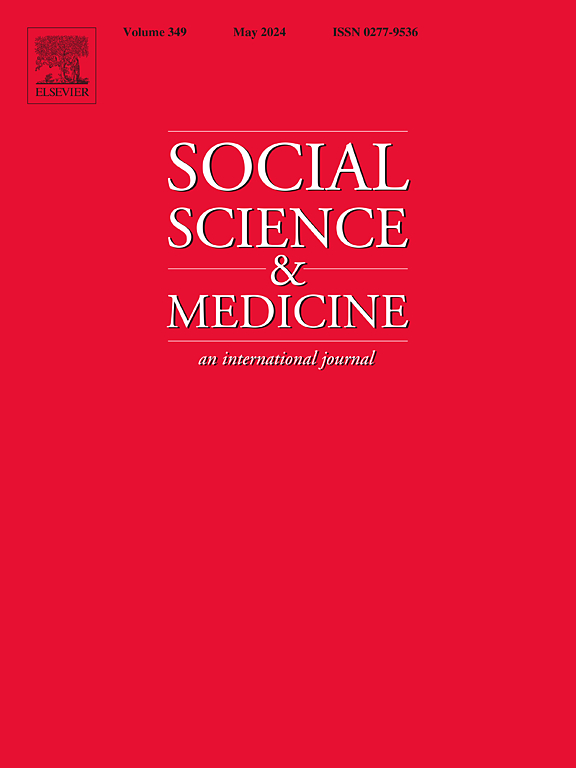从混乱到痛苦:用街景和纵向调查数据调查邻里变化和心理健康。
IF 5
2区 医学
Q1 PUBLIC, ENVIRONMENTAL & OCCUPATIONAL HEALTH
引用次数: 0
摘要
邻里身体障碍是居住环境的一个突出的负面方面,预计会对心理健康产生不利影响。然而,有限的使用纵向设计和客观测量身体障碍阻碍了因果关系的建立和研究结果的推广,特别是在快速变化的城市环境中。本研究将街景数据与2017年至2019年的上海城市邻里调查相结合,研究上海身体障碍的变化及其与心理困扰的关系。对街景数据的分析显示,在研究期间,身体紊乱的情况有所下降。采用固定效应模型和广义倾向得分匹配,我们发现这种下降与心理困扰的减少有关。这种关联在社会经济地位较低的居民中显著,而在社会经济地位较高的居民中则不那么明显。这些发现通过从快速变化的城市环境中提供更有力的证据,有助于理解身体障碍的影响。他们还揭示了上海和其他经历快速社区变化的城市居住环境改善的有效性。本文章由计算机程序翻译,如有差异,请以英文原文为准。
From disorder to distress: Investigating neighborhood change and mental health with Streetview and longitudinal survey data
Neighborhood physical disorder, a prominent negative aspect of the residential environment, is expected to adversely affect mental health. However, the limited use of longitudinal designs with objective measures of physical disorder hinders the establishment of causal effects and the generalizability of findings, particularly in rapidly changing urban contexts. This study integrates Streetview data with the Shanghai Urban Neighborhood Survey from 2017 to 2019 to examine changes in physical disorder and their association with psychological distress in Shanghai. Analysis of Streetview data reveals a decline in physical disorder over the study period. Employing fixed-effects models and generalized propensity score matching, we find that this decline is associated with reduced psychological distress. The association is significant among residents with lower socioeconomic status (SES), while it is less pronounced among high-SES residents. These findings contribute to the understanding of the effect of physical disorder by providing more robust evidence from a rapidly transforming urban context. They also shed light on the effectiveness of residential environment improvements in Shanghai and other cities experiencing rapid neighborhood change.
求助全文
通过发布文献求助,成功后即可免费获取论文全文。
去求助
来源期刊

Social Science & Medicine
PUBLIC, ENVIRONMENTAL & OCCUPATIONAL HEALTH-
CiteScore
9.10
自引率
5.60%
发文量
762
审稿时长
38 days
期刊介绍:
Social Science & Medicine provides an international and interdisciplinary forum for the dissemination of social science research on health. We publish original research articles (both empirical and theoretical), reviews, position papers and commentaries on health issues, to inform current research, policy and practice in all areas of common interest to social scientists, health practitioners, and policy makers. The journal publishes material relevant to any aspect of health from a wide range of social science disciplines (anthropology, economics, epidemiology, geography, policy, psychology, and sociology), and material relevant to the social sciences from any of the professions concerned with physical and mental health, health care, clinical practice, and health policy and organization. We encourage material which is of general interest to an international readership.
 求助内容:
求助内容: 应助结果提醒方式:
应助结果提醒方式:


